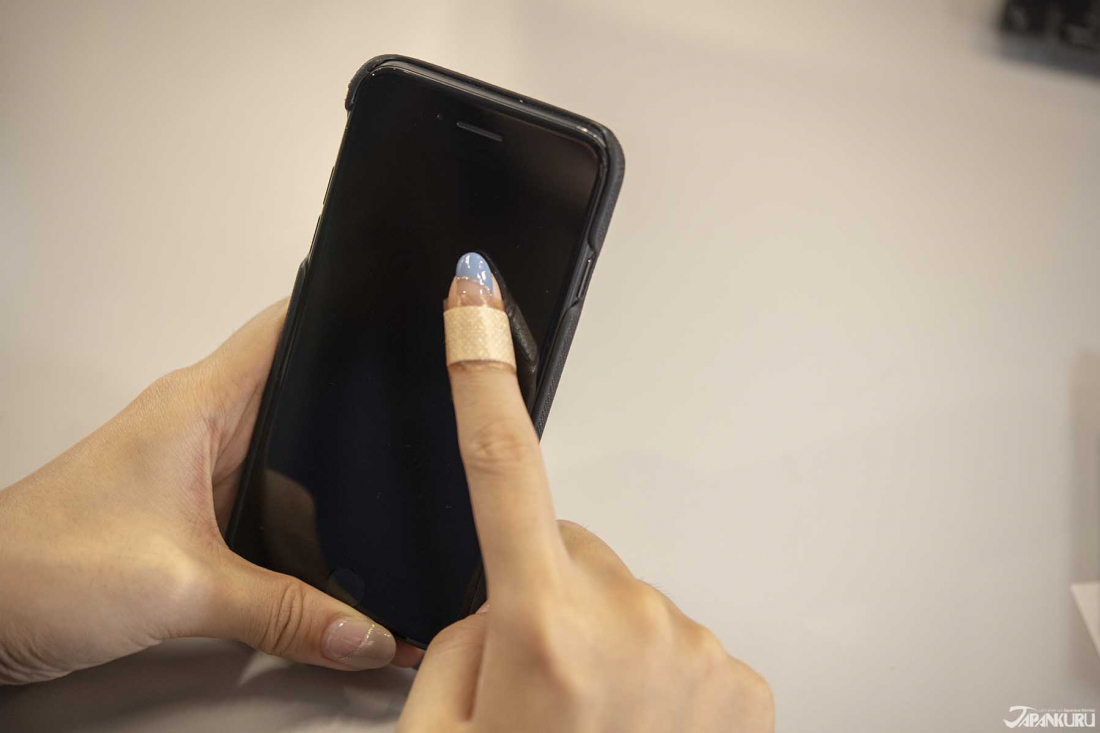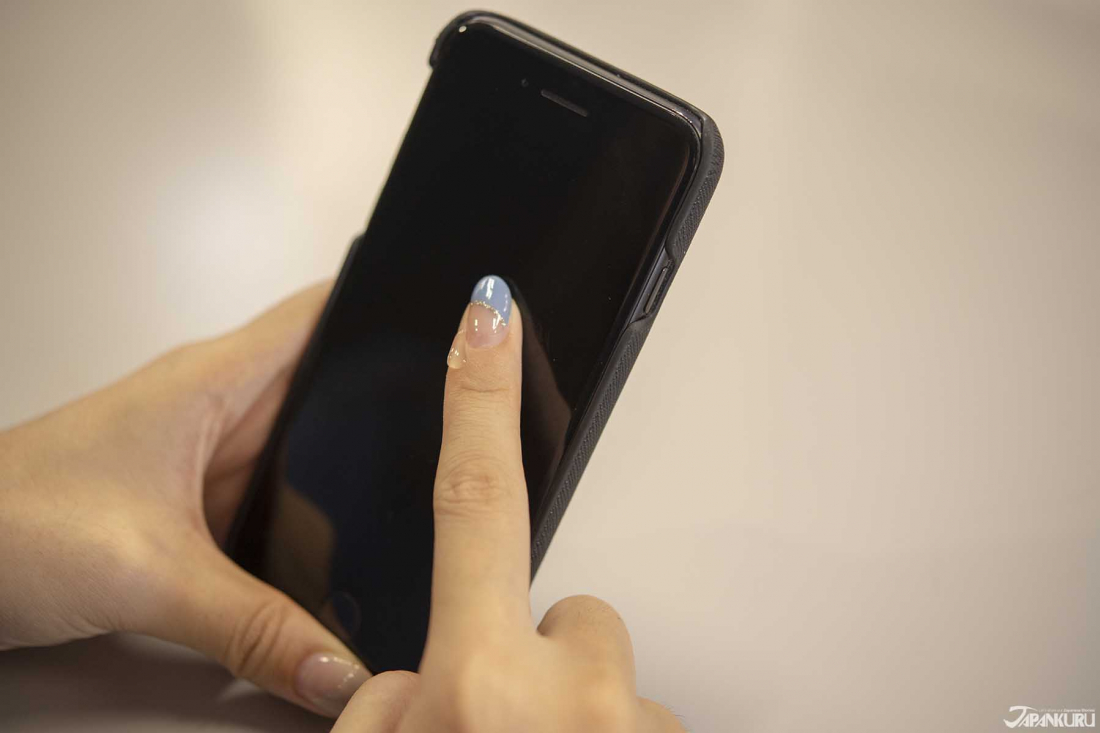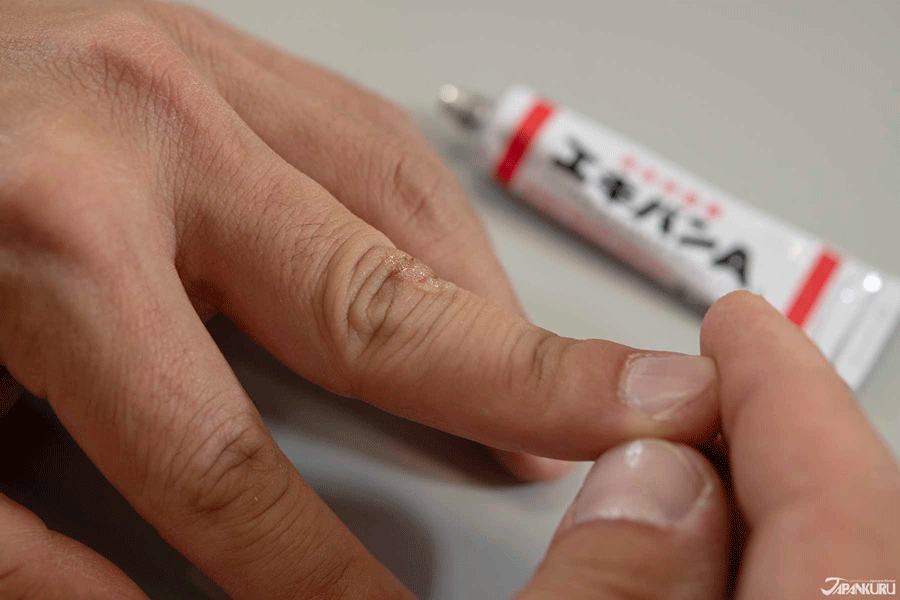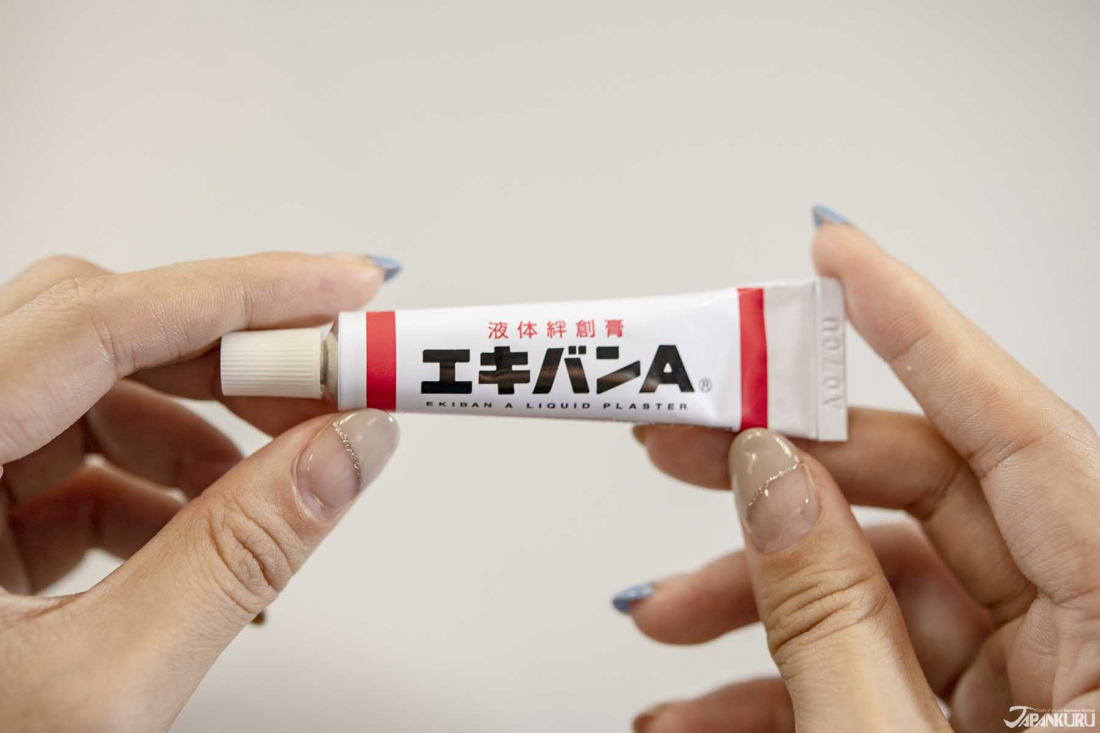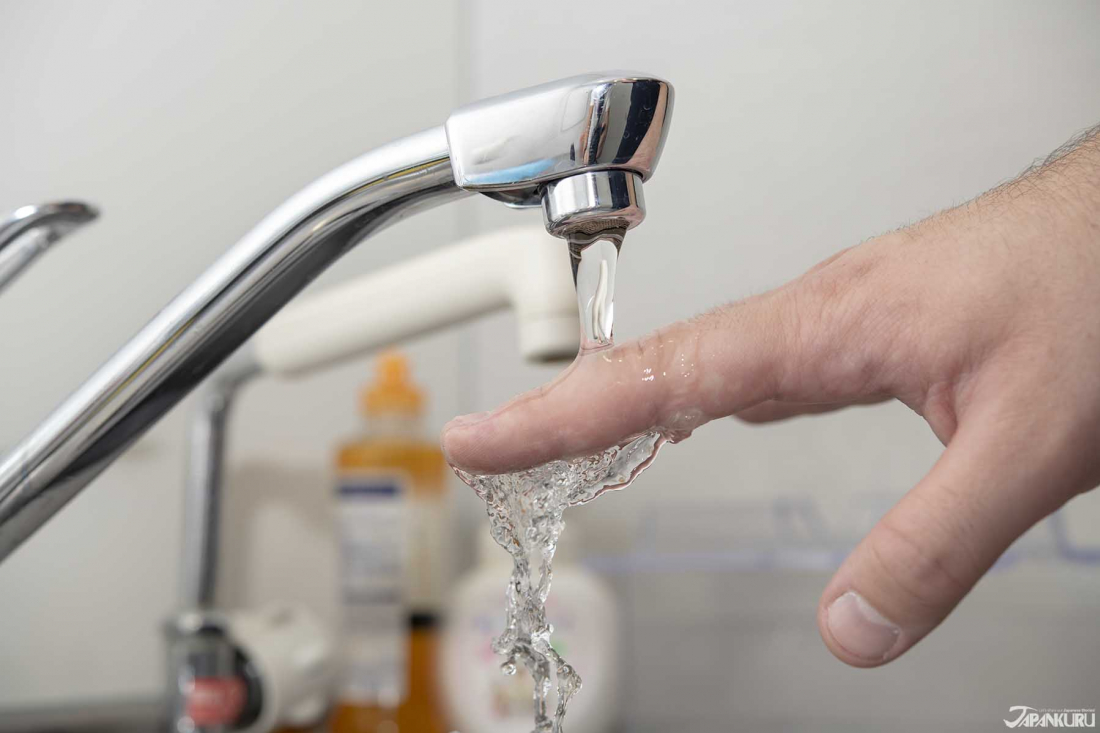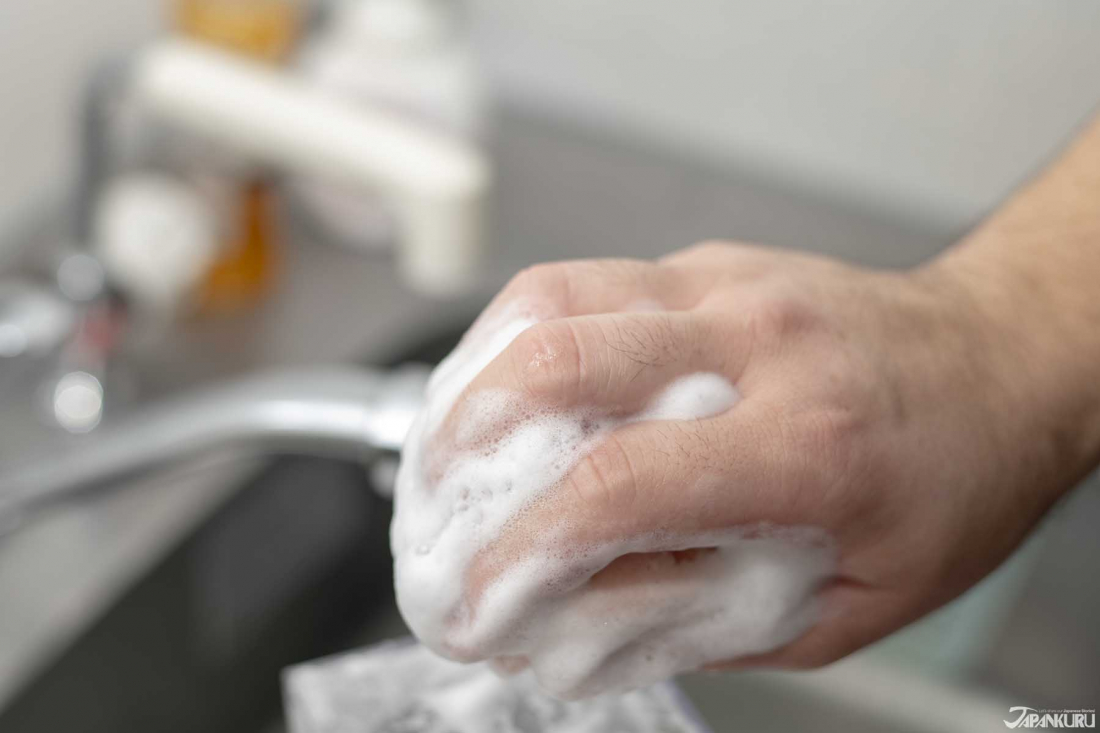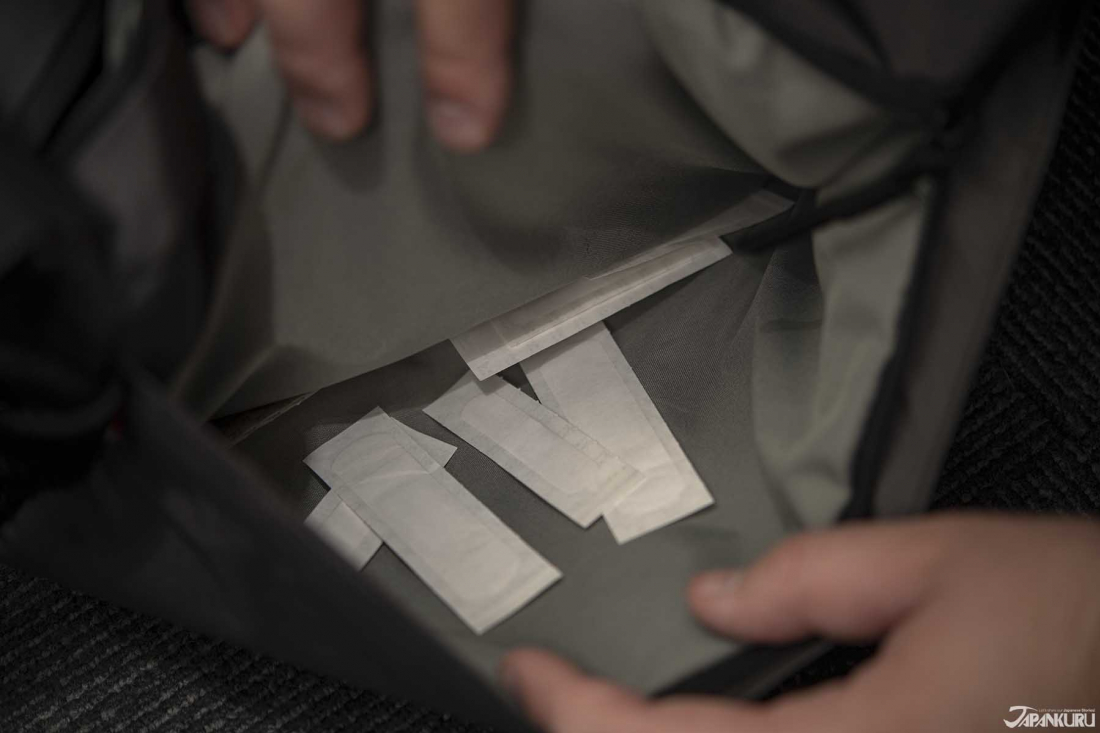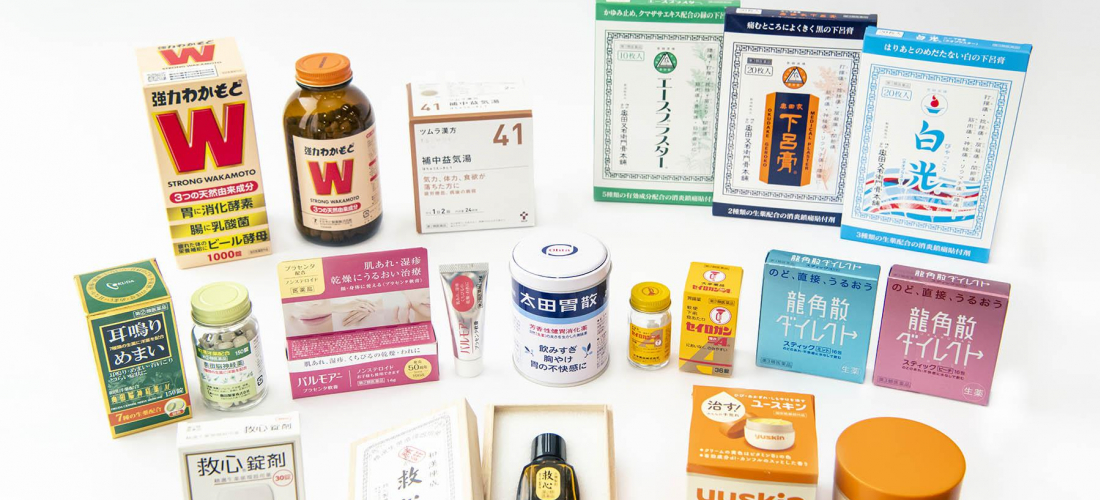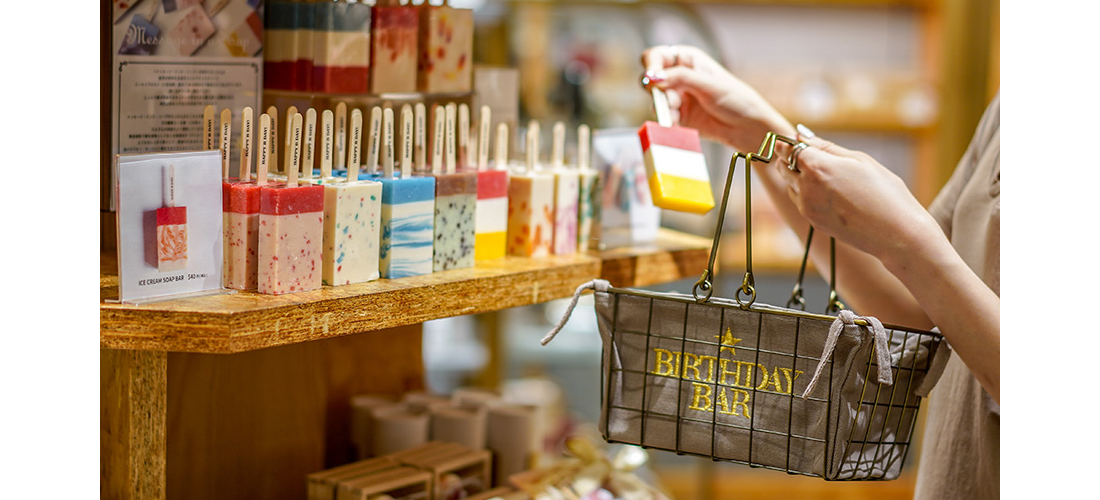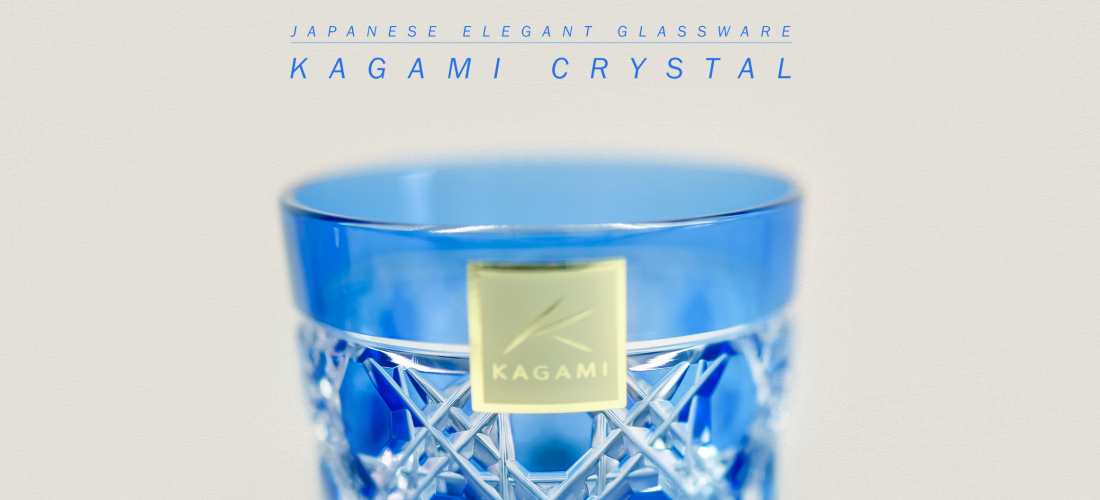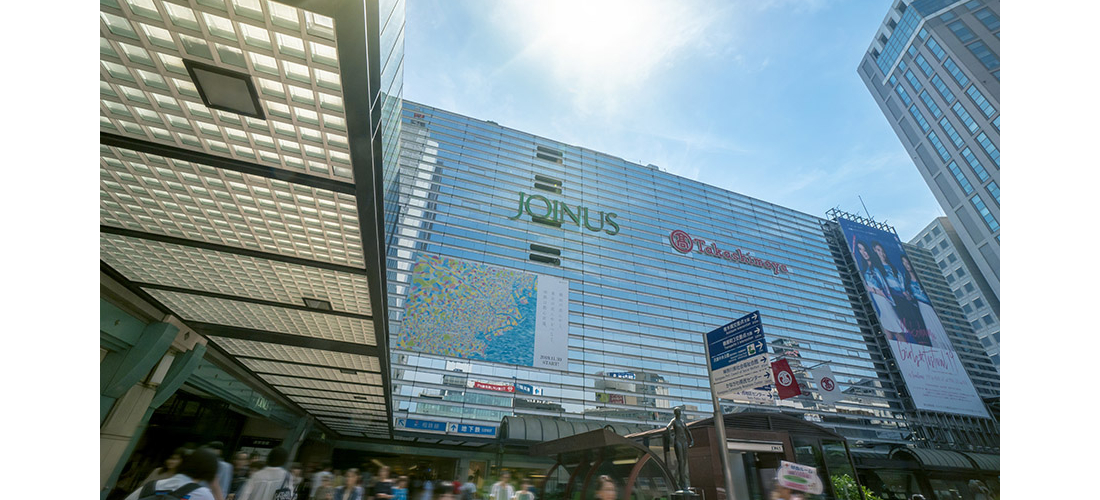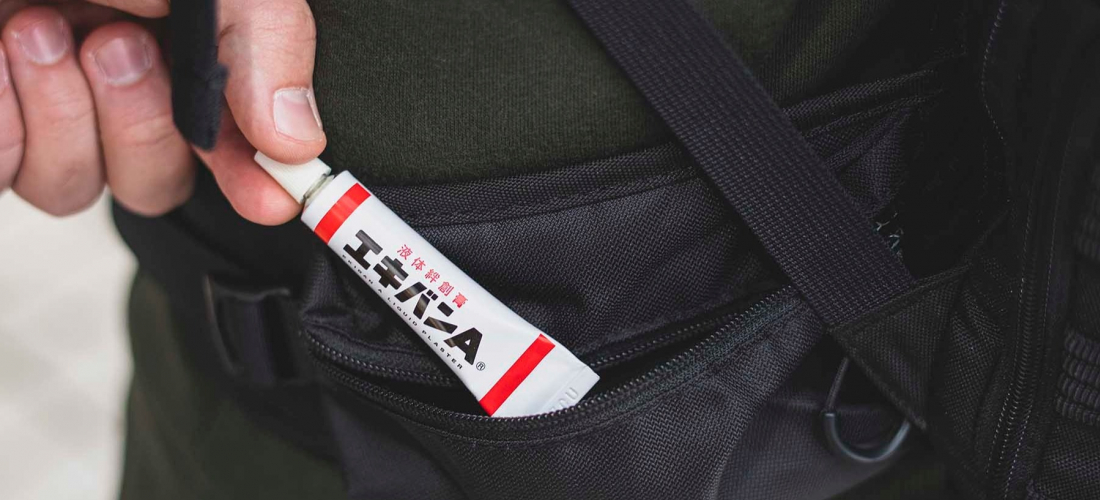
CONTENTS
The dry air of Japan’s winters makes your hands especially vulnerable to small cuts, scrapes, and skin breaks, which do nothing but add a little bit of misery to a fun trip. But when the inevitable happens, what do you do? Nobody wants to lug around a giant first aid kit every day! It turns out, like so many of life’s inconveniences, Japan has the answer! Ekiban A Liquid Plaster might just be all the first aid you need, keeping cuts clean and dry throughout the day so you can concentrate on having a blast in Japan. Now, which of our friends and family could use a super-practical souvenir…
Like a Thin Layer of Peace of Mind
We probably all have memories of learning how to care for our cuts and bruises when we were small; guardians and older siblings telling us not to touch, to keep the cut clean and dry, and protect it from the germs of the world. With that advice in mind, we've all struggled to do our best and take care of the little injuries that come with growing older, using big chunky bandages and replacing them throughout the day. But, try as we might, those bandages just aren't all that practical! Get them a little wet or a little dirty, snag them on something for just a minute, and it's time for a new one! It's just not great for consistent healing.
But if you've been keeping an eye on drug stores in recent years, you might have noticed one very convenient innovation in particular: liquid bandages! Just apply a thin layer of Ekiban A's clear gel to the clean, dry skin you're trying to protect, let it dry, and tada! You've got a flexible, protective layer that keeps water and dust out of your cut, and is barely even noticeable. Here at JAPANKURU, we were already believers, but we wanted to check: could Ekiban A really do such a good job protecting cuts while the skin knits back together? Does it deserve a spot on every tourist's Japan shopping list? Time for a little investigation!
An Inconspicuous and Unobtrusive Liquid Plaster: Ekiban A
Bandages that stand out and draw attention to a small cut or scrape might be obnoxious, but the much bigger issue is when they don't do their job! All we really ask of a bandage is to keep our cuts clean and dry throughout the day, without getting in our way as we go about our daily business. So we decided to see just how well Ekiban A stands up to some of what life throws at us every day. Just how well does this clear, flexible liquid bandage do!?
Ekiban A (エキバンA)
(Ekiban A Liquid Plaster)
Found in drug stores all across Japan.
① Bandages With a Perfect Fit
Traditional bandages might come in a variety of sizes, but try as they might, all too often bandages just don't quite conform to the strange shapes of our bodies. Our fingers just aren't perfect cylinders, so the average bandaid doesn't do a great job of staying put and protecting the skin. Ekiban A, on the other hand, should conform to just about any shape. Let's see it in action.
Not only does this bandage look like it's about to fall off… it's making it impossible to use the phone's touchscreen properly. How are we going to browse the internet and flick through JAPANKURU articles this way??
Now this is better! The cuticle is nice and protected, but the finger can still move freely.
Plus! Even if you have a cut on the tip or pad of your finger, if you put Ekiban A on the wound and let it dry, you can use touch screens like normal! Go ahead and surf the web in peace.
② Don’t Limit Yourself, and Don’t Let Your Bandage Limit You Either!
Tired of dealing with the stiff, tight feeling of bandages on a scraped knuckle, we put a little bit of Ekiban A on there to see just how well it would flex with the movement. Plain and simple, the answer is: it did a good job! We found that as long as the joint is moved around a bit while the liquid bandage is drying, it'll maintain great, comfortable flexibility throughout the day!
③ Conveniently Compact
Some of the more safety-conscious members of the JAPANKURU team carry around bandages and first aid kits every single day, which (unsurprisingly) takes up kind of a lot of room! So we took a look at the little tubes of Ekiban A and already knew that no experiments need be undertaken. Ekiban A took up a fraction of the space, and still gave us that same peace of mind – we knew we were prepared for any little cuts that came our way! (Plus, it didn't leave us with all the bits of paper and trash you get from a bandage. Always nice in Japan, where there are few public trash cans!)
How Else Can We Use Ekiban A…?
Protect Irritated Skin
Inspired by our success so far, we started to look for other ways to take advantage of what Ekiban A has to offer…
Any visitor to Japan will tell you that touring the country includes a lot of walking, and when your shoes aren't quite broken in enough (or they're just not all that great to begin with), that can result in some uncomfortable rubbing and irritation. And once your feet start to hurt, it can make your whole trip just that much less fun and carefree. But we found a great way to nip the problem in the bud! Put a little bit of Ekiban A on any problem areas to reduce friction and create a layer of protection, and you'll be back on your feet in no time.
A relatively thick layer will do the best job, but be careful – just leaving a blob like this one might cause even more problems!
Keep Skin Dry!
We already knew that a little bit of rain or sweat wasn't going to ruin a good layer of Ekiban A, but what about washing hands, taking a shower, or (the horror) washing dishes?
Well, actually…
Looks like it's not an issue! This stuff is pretty waterproof, even with added soap! Of course, soaking the liquid bandage for a while and scrubbing it well is one way to get it off in a rush, but in the course of normal daily activities, it held fast.
Pack Light, But Stay Safe
And in the end, we're back to the convenience of the single tube. How many times have you thrown a handful of bandages in a bag, only to find them gone or dirty when you finally need them?
Just one little tube of Ekiban A replaces all those, can last for much longer in the jumble of objects bouncing around in your bag, and it won't fly away or magically disappear.
So when you want just a little bit of travel first aid to throw in your bag and have ready just when you need it, with our experimentation we found that Ekiban A is the clear choice (and literally the clear choice, it's very subtle). Keep those little cuts safe from the wear and tear of travel! Grab a couple for yourself, and you might just be convinced to drop back into the drug store to pick some up for friends back home (we were sure tempted).
Have you tried Ekiban A before? Did it save your trip… or just make life a little bit easier for the day? Let us know about your experience on twitter, instagram, and facebook!
Details
NAME:Ekiban A Liquid Plaster
COMMENT
FEATURED MEDIA
VIEW MORE 
A New Tokyo Animal Destination: Relax & Learn About the World’s Animals in Japan
#pr #japankuru #anitouch #anitouchtokyodome #capybara #capybaracafe #animalcafe #tokyotrip #japantrip #카피바라 #애니터치 #아이와가볼만한곳 #도쿄여행 #가족여행 #東京旅遊 #東京親子景點 #日本動物互動體驗 #水豚泡澡 #東京巨蛋城 #เที่ยวญี่ปุ่น2025 #ที่เที่ยวครอบครัว #สวนสัตว์ในร่ม #TokyoDomeCity #anitouchtokyodome

Shohei Ohtani Collab Developed Products & Other Japanese Drugstore Recommendations From Kowa
#pr #japankuru
#kowa #syncronkowa #japanshopping #preworkout #postworkout #tokyoshopping #japantrip #일본쇼핑 #일본이온음료 #오타니 #오타니쇼헤이 #코와 #興和 #日本必買 #日本旅遊 #運動補充能量 #運動飲品 #ช้อปปิ้งญี่ปุ่น #เครื่องดื่มออกกำลังกาย #นักกีฬา #ผลิตภัณฑ์ญี่ปุ่น #อาหารเสริมญี่ปุ่น

도쿄 근교 당일치기 여행 추천! 작은 에도라 불리는 ‘가와고에’
세이부 ‘가와고에 패스(디지털)’ 하나면 편리하게 이동 + 가성비까지 완벽하게! 필름카메라 감성 가득한 레트로 거리 길거리 먹방부터 귀여움 끝판왕 핫플&포토 스폿까지 총집합!
Looking for day trips from Tokyo? Try Kawagoe, AKA Little Edo!
Use the SEIBU KAWAGOE PASS (Digital) for easy, affordable transportation!
Check out the historic streets of Kawagoe for some great street food and plenty of picturesque retro photo ops.
#pr #japankuru #도쿄근교여행 #가와고에 #가와고에패스 #세이부패스 #기모노체험 #가와고에여행 #도쿄여행코스 #도쿄근교당일치기 #세이부가와고에패스
#tokyotrip #kawagoe #tokyodaytrip #seibukawagoepass #kimono #japantrip

Hirakata Park, Osaka: Enjoy the Classic Japanese Theme Park Experience!
#pr #japankuru #hirakatapark #amusementpark #japantrip #osakatrip #familytrip #rollercoaster #retrôvibes #枚方公園 #大阪旅遊 #關西私房景點 #日本親子旅行 #日本遊樂園 #木造雲霄飛車 #히라카타파크 #สวนสนุกฮิราคาตะพาร์ค

🍵Love Matcha? Upgrade Your Matcha Experience With Tsujiri!
・160년 전통 일본 말차 브랜드 츠지리에서 말차 덕후들이 픽한 인기템만 골라봤어요
・抹茶控的天堂!甜點、餅乾、飲品一次滿足,連伴手禮都幫你列好清單了
・ส่องมัทฉะสุดฮิต พร้อมพาเที่ยวร้านดังในอุจิ เกียวโต
#pr #japankuru #matcha #matchalover #uji #kyoto #japantrip #ujimatcha #matchalatte #matchasweets #tsujiri #말차 #말차덕후 #츠지리 #교토여행 #말차라떼 #辻利抹茶 #抹茶控 #日本抹茶 #宇治 #宇治抹茶 #日本伴手禮 #抹茶拿鐵 #抹茶甜點 #มัทฉะ #ของฝากญี่ปุ่น #ชาเขียวญี่ปุ่น #ซึจิริ #เกียวโต

・What Is Nenaito? And How Does This Sleep Care Supplement Work?
・你的睡眠保健品——認識「睡眠茶氨酸錠」
・수면 케어 서플리먼트 ‘네나이토’란?
・ผลิตภัณฑ์เสริมอาหารดูแลการนอน “Nenaito(ネナイト)” คืออะไร?
#pr #japankuru #sleepcare #japanshopping #nenaito #sleepsupplement #asahi #睡眠茶氨酸錠 #睡眠保健 #朝日 #l茶胺酸 #日本藥妝 #日本必買 #일본쇼핑 #수면 #건강하자 #네나이토 #일본영양제 #อาหารเสริมญี่ปุ่น #ช้อปปิ้งญี่ปุ่น #ร้านขายยาญี่ปุ่น #ดูแลตัวเองก่อนนอน #อาซาฮิ

Japanese Drugstore Must-Buys! Essential Items from Hisamitsu® Pharmaceutical
#PR #japankuru #hisamitsu #salonpas #feitas #hisamitsupharmaceutical #japanshopping #tokyoshopping #traveltips #japanhaul #japantrip #japantravel

Whether you grew up with Dragon Ball or you just fell in love with Dragon Ball DAIMA, you'll like the newest JINS collab. Shop this limited-edition Dragon Ball accessory collection to find some of the best Dragon Ball merchandise in Japan!
>> Find out more at Japankuru.com! (link in bio)
#japankuru #dragonball #dragonballdaima #animecollab #japanshopping #jins #japaneseglasses #japantravel #animemerch #pr

This month, Japankuru teamed up with @official_korekoko to invite three influencers (originally from Thailand, China, and Taiwan) on a trip to Yokohama. Check out the article (in Chinese) on Japankuru.com for all of their travel tips and photography hints - and look forward to more cool collaborations coming soon!
【橫濱夜散策 x 教你怎麼拍出網美照 📸✨】
每次來日本玩,是不是都會先找旅日網紅的推薦清單?
這次,我們邀請擁有日本豐富旅遊經驗的🇹🇭泰國、🇨🇳中國、🇹🇼台灣網紅,帶你走進夜晚的橫濱!從玩樂路線到拍照技巧,教你怎麼拍出最美的夜景照。那些熟悉的景點,換個視角說不定會有新發現~快跟他們一起出發吧!
#japankuru #橫濱紅磚倉庫 #汽車道 #中華街 #yokohama #japankuru #橫濱紅磚倉庫 #汽車道 #中華街 #yokohama #yokohamaredbrickwarehouse #yokohamachinatown

If you’re a fan of Vivienne Westwood's Japanese designs, and you’re looking forward to shopping in Harajuku this summer, we’ve got important news for you. Vivienne Westwood RED LABEL Laforet Harajuku is now closed for renovations - but the grand reopening is scheduled for July!
>> Find out more at Japankuru.com! (link in bio)
#japankuru #viviennewestwood #harajuku #omotesando #viviennewestwoodredlabel #viviennewestwoodjapan #비비안웨스트우드 #오모테산도 #하라주쿠 #日本購物 #薇薇安魏斯伍德 #日本時尚 #原宿 #表參道 #japantrip #japanshopping #pr

Ready to see TeamLab in Kyoto!? At TeamLab Biovortex Kyoto, the collective is taking their acclaimed immersive art and bringing it to Japan's ancient capital. We can't wait to see it for ourselves this autumn!
>> Find out more at Japankuru.com! (link in bio)
#japankuru #teamlab #teamlabbiovortex #kyoto #kyototrip #japantravel #artnews
Photos courtesy of teamLab, Exhibition view of teamLab Biovortex Kyoto, 2025, Kyoto ® teamLab, courtesy Pace Gallery

Japanese Makeup Shopping • A Trip to Kamakura & Enoshima With Canmake’s Cool-Toned Summer Makeup
#pr #canmake #enoshima #enoden #에노시마 #캔메이크 #japanesemakeup #japanesecosmetics

⚔️The Robot Restaurant is gone, but the Samurai Restaurant is here to take its place. Check it out, and don't forget your coupon!
🍣신주쿠의 명소 로봇 레스토랑이 사무라이 레스토랑으로 부활! 절찬 쿠폰 발급중
💃18歲以上才能入場的歌舞秀,和你想的不一樣!拿好優惠券去看看~
#tokyo #shinjuku #samurairestaurant #robotrestaurant #tokyotrip #도쿄여행 #신주쿠 #사무라이레스토랑 #이색체험 #할인이벤트 #歌舞伎町 #東京景點 #武士餐廳 #日本表演 #日本文化體驗 #japankuru #japantrip #japantravel #japanlovers #japan_of_insta

Japanese appliance & electronics shopping with our KOJIMA x BicCamera coupon!
用JAPANKURU的KOJIMA x BicCamera優惠券買這些正好❤️
코지마 x 빅 카메라 쿠폰으로 일본 가전 제품 쇼핑하기
#pr #japankuru #japanshopping #kojima #biccamera #japaneseskincare #yaman #dji #osmopocket3 #skincaredevice #日本購物 #美容儀 #相機 #雅萌 #日本家電 #일본여행 #면세 #여행꿀팁 #일본쇼핑리스트 #쿠폰 #일본쇼핑 #일본브랜드 #할인 #코지마 #빅카메라 #japankurucoupon


